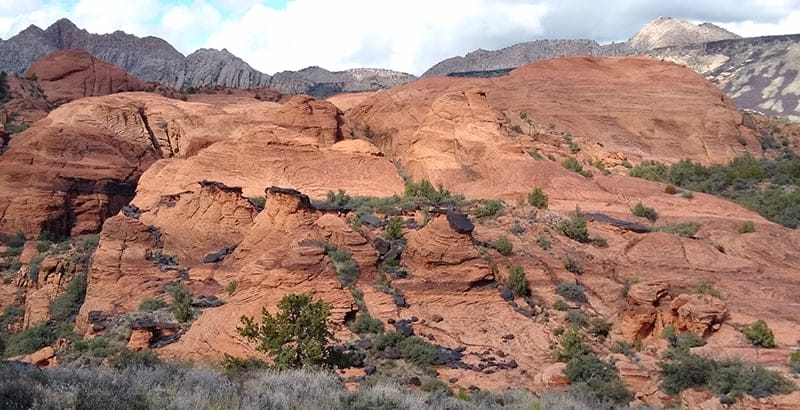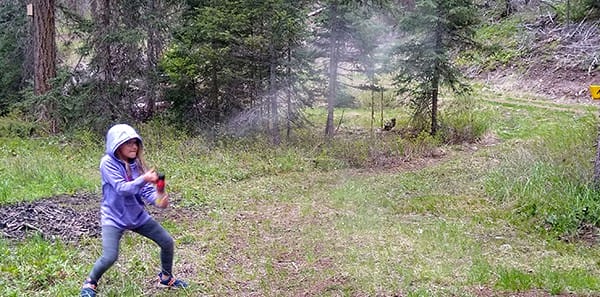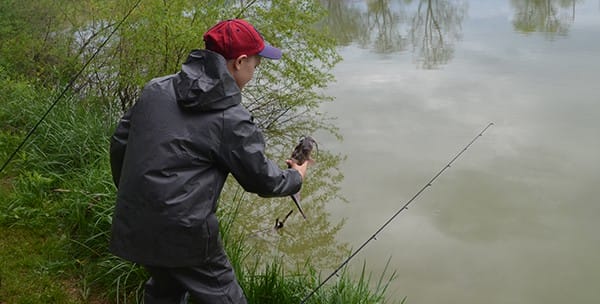
7 Outdoor Skills to Teach Your Kids
By PJ DelHomme
The great outdoors is just that—great. But like anything else, the wild comes with a set of unique risks, challenges, and obstacles. Give your kids the skills to thrive in the great wide open.
The storm gave us little warning as we hiked in the canyon country of southern Utah. There were three families—six adults and seven kids, ages ranging from third grade to high school. When the skies opened, we scattered for cover under rock outcrops along the trail. The rain subsided, and we regrouped except for my 11-year-old son. He wasn’t there, and no one knew where he was.

Utah canyon country
I suppressed instant anxiety and made a plan with my wife. I started jogging in the direction he was last seen hiking. After 15 minutes, my anxiety heightened. This kid has no idea where he is or what he’s doing, I thought. I met another family at a fork in the trail coming from the east. “Have you seen a kid about 11, this high?” I asked. They had not seen him. Three minutes later, he came walking toward me from the west. My heart soared. The whole ordeal took about 30 minutes.
1. Stay Found
I was thankful that my kid used his brain and started to backtrack once he realized he was alone. Then again, what if he wasn’t sure which fork to take? In hindsight, he should have just stayed put. An easy acronym for kids (and adults) to learn is S.T.O.P., which stands for stop, think, observe, and plan. If you can teach kids to relax and stay put, most are found soon after they go missing.
2. Learn to Swim
Even though it feels like I spend every other weekend inside some stuffy pool watching my kids swim for all of seven minutes at a swim meet, I’m glad we got them swim lessons when they were little. You don’t have to go to the extremes of putting them on a swim team, but knowing how to swim and being comfortable in the water is a huge stress relief for the entire family.
3. Build a Fire…anywhere
My kids typically don’t carry a lighter, but when we hike in the woods, I give one kid a lighter and the other a flint and steel striker. Then we have a contest to see who gets their fire going first. It’s not tough in August, but January cross-country ski trips are different. Fires are nice for smores in August, but they might save your life in January. Knowing how to build one anywhere, anytime is key.
4. Poisonous Plants, Reptiles, and Insects
Every region of the U.S. has its own particular “nasties,” as we call them. We live in Montana, so we talk about mountain lions, bears, and weirdo humans. I bought an inert can of bear spray so the kids could practice using it on any one of those three if they feel threatened. We also discuss hanging food in a tree and what to do when seeing a bear. We don’t have poison ivy or copperhead snakes, but if that’s part of your world, teach kids how to identify poisonous plants and “nasty” snakes.

Testing bear spray
5. Catch, Kill, Clean, and Cook a Fish
What better place to learn about the circle of life than at the old fishing hole? My son only wants to catch fish when he can eat it. The fun part was catching it. The worst part was whacking its head with a stick. It’s a big deal to some kids to take the life of a living thing, and I’m glad my kid felt some remorse. Once he helped me clean it, we ate it, and he wasn’t as sad.
 6. Build a Shelter
6. Build a Shelter
First, call it a fort—anything is cooler than a lean-to or shelter. You can use whatever is around on the ground to make a simple lean-to or bring a tarp and some parachute cord. You can do both by making a lean-to frame, covering it with a tarp, and then using parachute cord to tie it all together. It’s a great chance to practice knots like clove, timber, and cow hitch—all of which have numerous applications. If they like the finished product, they may even want to sleep in it—at least in theory.
 7. Tolerate Discomfort
7. Tolerate Discomfort
This may be the toughest skill to teach. It’s hard to get kids to appreciate indoor plumbing, hot water, and a comfy bed. I take it for granted, too. You can choose to sleep in a fifth wheel with all the comforts of home but try car camping or backpacking. Sleep in a tent for a couple of nights. It makes a modest home feel luxurious. I don’t want our family outings to be entirely miserable. A couple of bugs, a little dirt, and some exercise aren’t going to kill any of us. I aim to wear the kids out so they don’t even know they’re sleeping on the ground.
If you’re serious about getting kids involved in the great outdoors, especially if you don’t have easy access to lakes and public land, look into local scouting programs in your area. Most cities also have summer programs for kids that take them on adventures—and it doubles as childcare while you work. And finally, hundreds of summer camps around the country teach “woodsy” skills that might be useful when your kid gets lost on their own.
PJ DelHomme writes and edits content from his home in western Montana. He runs Crazy Canyon Media and Crazy Canyon Journal.
Check out other articles in our Summer Road Trip Survival Guide blog series.








